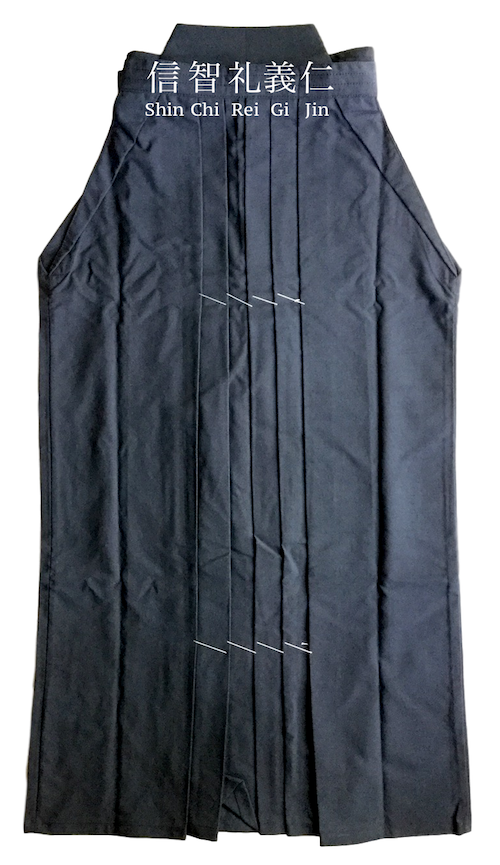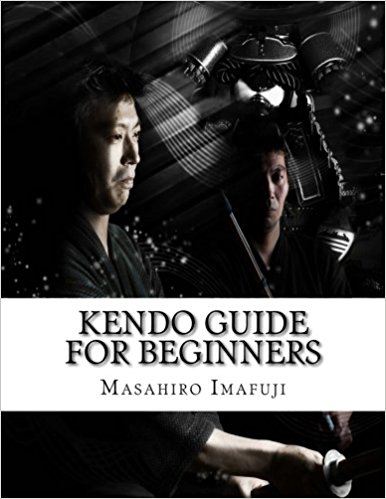You Got It!
Drawing Your Sword Out with Respect
~Meanings of The Pleats~
With what feelings do you draw out your sword? With respect? With righteousness? Have you ever thought about the relevance between your hand positions and the pleats of the hakama? Let’s look at the relevance between your hand positions and the pleats of the hakama.
The Meanings of the Pleats

Most of kendoists know about the meanings of the pleats. We have 5 pleats at the front of the hakama. Three on the left and two on the right. At the back we have one pleat. From the far left to the right, the meaning of each pleat is...
- Jin: Benevolence, humanity
- Gi: Righteousness, Justice
- Rei: Courtesy, politeness
- Chi: Wisdom, Knowledge
- Shin: Sincerity, faithfulness
These are Five Virtues from Confucianism.
The back pleats means “the true way of a man (person) without two minds”. This means we train on the right track with determination.
Shift of The Virtues as Drawing the Sword
I would like to explain the shift of the five virtues as you draw. This interpretation is from “Buke no Shikitari/Oshie” by Takahito Tengansai Tomotsune, p.172, Kendo Nippon Magazine No. 449, July 2013. And I translated some of the article to share here.
“When your sword is in the saya, your left hand is at the jin pleat. That means your mind should be filled with benevolence. When you unlock the sword with your thumb, your left hand is over the gi pleat. At this point, you must have determination to draw out your sword for 'gi' with 'jin' in your heart. When your right hand is on the shin pleat, you must have faith in your martial luck. And when the right hand comes over the chi pleat, you must judge by integrating all the wisdom and knowledge you have. And when the both hand comes to the middle, over the rei pleat, then your sword, the soul of Bushi, will be drawn out for the first time. This is what 'to draw out the sword' means.”
Mr. Tomotsune says in this article, there is a mentality of “sticking to the ‘gi’” underlies in bushido. To define ‘gi’ it is very hard indeed. Gi is simply the right things to do as a human. This could be the same to me and to you and could be different depending on our cultural background. Let’s talk about gi from the kendo perspectives.
Gi: The Right Things To Do
What is the right thing to do in kendo? Execute a strike with a good posture and vigorous kiai with the monouchi in the correct direction of the blade at one of the targets or datotsubui followed by zanshin. I think this is the right process to execute and complete our strike. We all know it is not as easy as it looks.
That is the physical side or visible side of kendo. What about mental side? Some hit a target using a feint to gain a point. Some disagrees that they got struck because such strike wouldn’t be a point in shiai. These are examples of training based on one’s interest, not based on the right things to do.
When I was a child, this is what I was told; strike with everything you have without considering the consequence, i.e. strike with sutemi. By doing so we can nurture courage. Through trials and errors, we will learn the right moment to execute strikes with sutemi. This will create confidence. And this leads our attitude to...
I will execute my strike at the right moment in the right way with a full of confidence in my own judgement without worrying about the result. This becomes a fully committed strike.
It is not about how fast you can strike. It is not about how many points you can gain. It is about executing a fully committed strike, fixing it and improving it in the right process.
Isn’t it the concept of kendo that is “to discipline the human character through the application of the principles of the Katana (sword)”?
Kendo Guide for Beginners Available at Your Amazon
A Kendo Instruction Book Written By A Japanese For Non-Japanese Speakers Who Are Enthusiastic to Learn Kendo.
All the instructions of the basics on this site is in this book with
- New and Better Photos (taken for this book!) and
- Newly Edited Contents
- Corresponding Videos
Kindle version is available too. Click here to learn more about the book.


